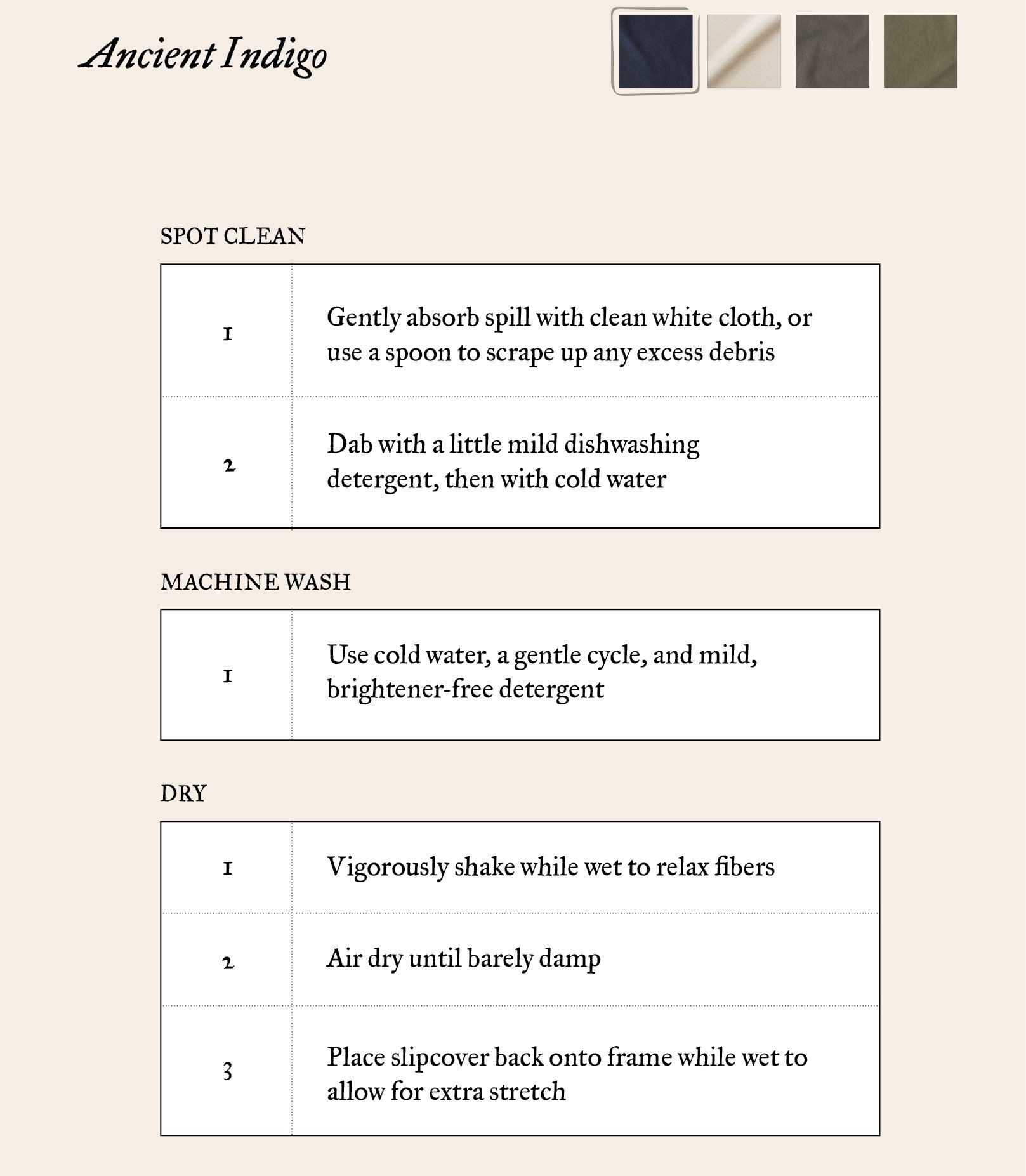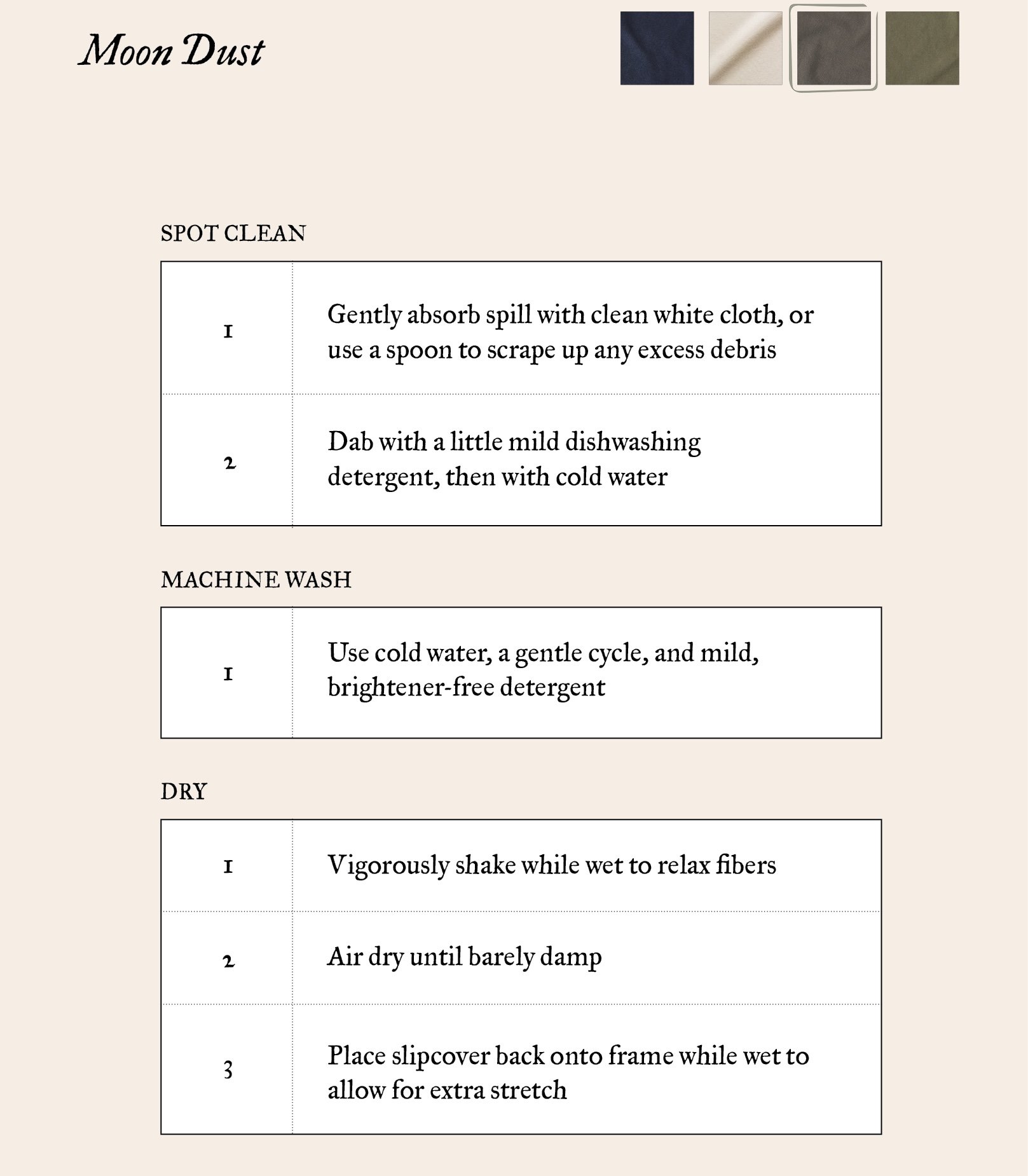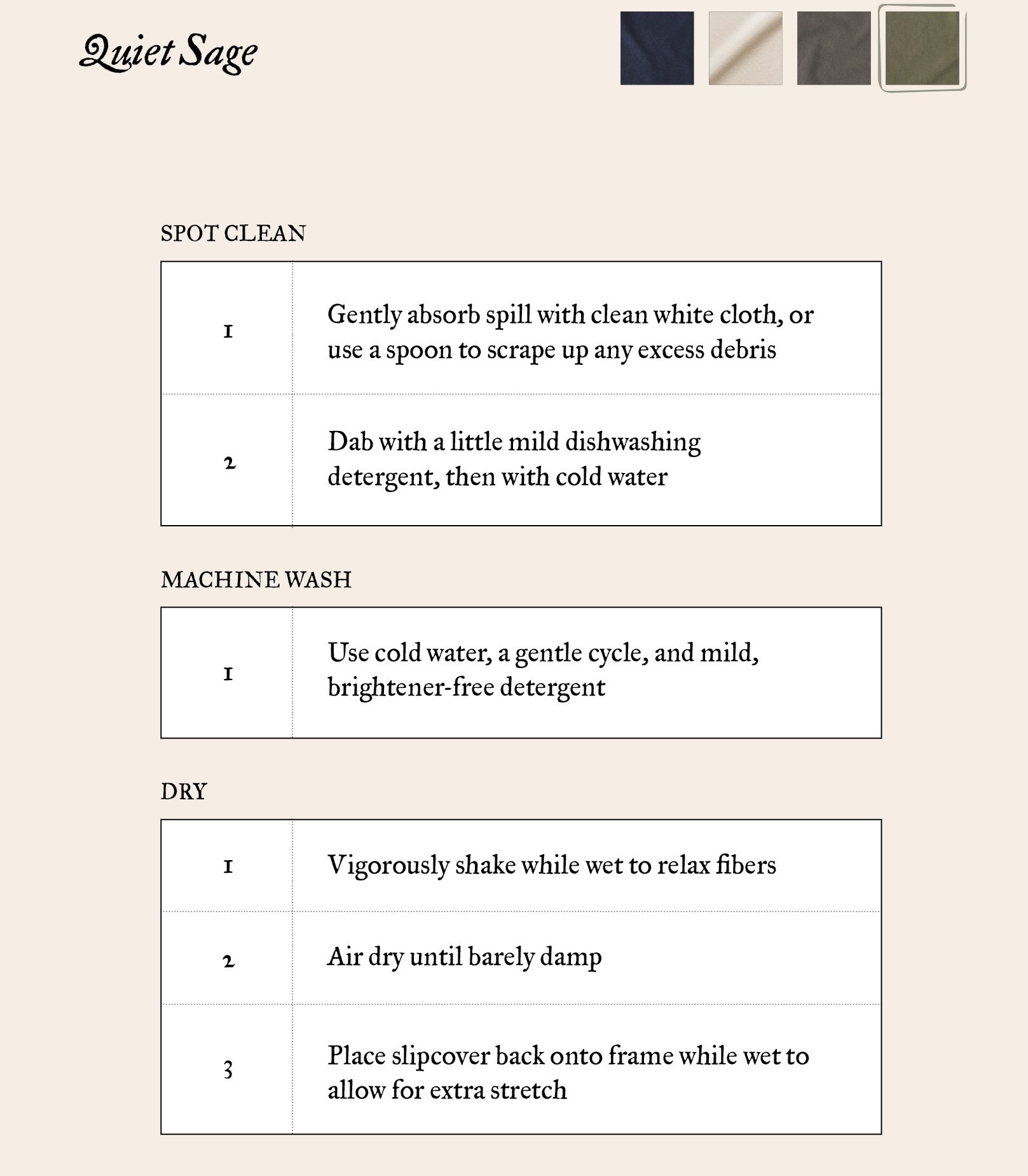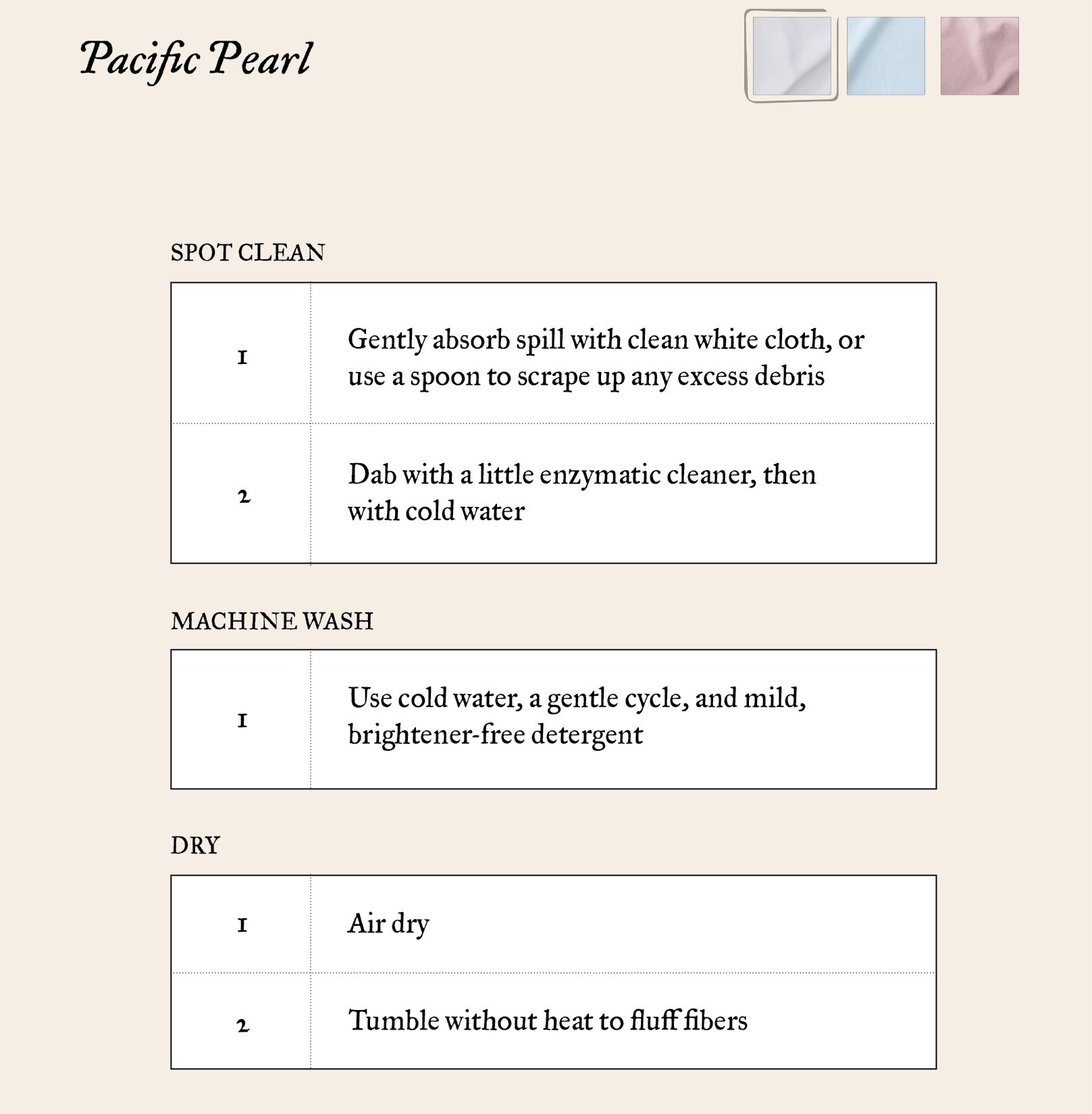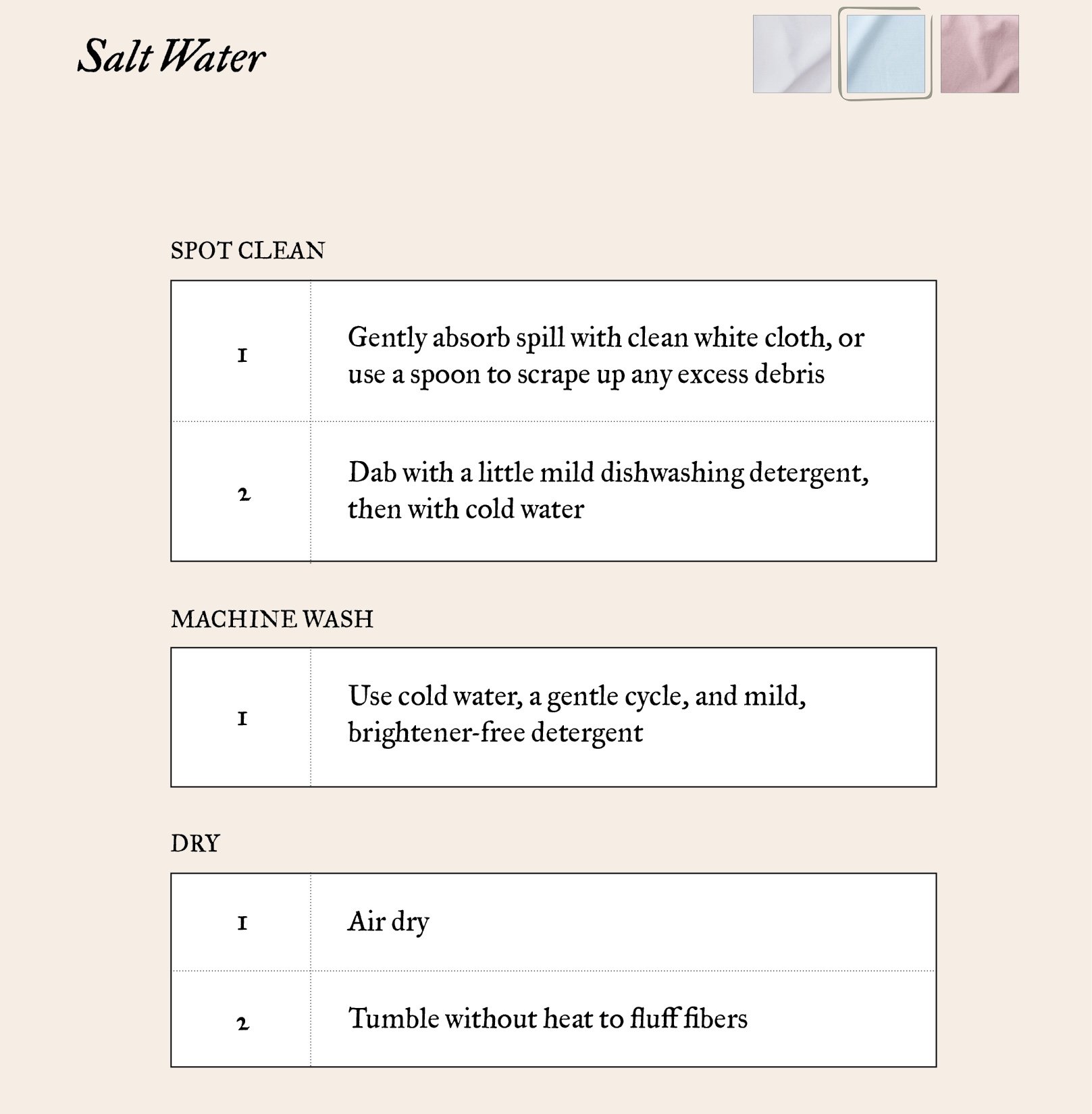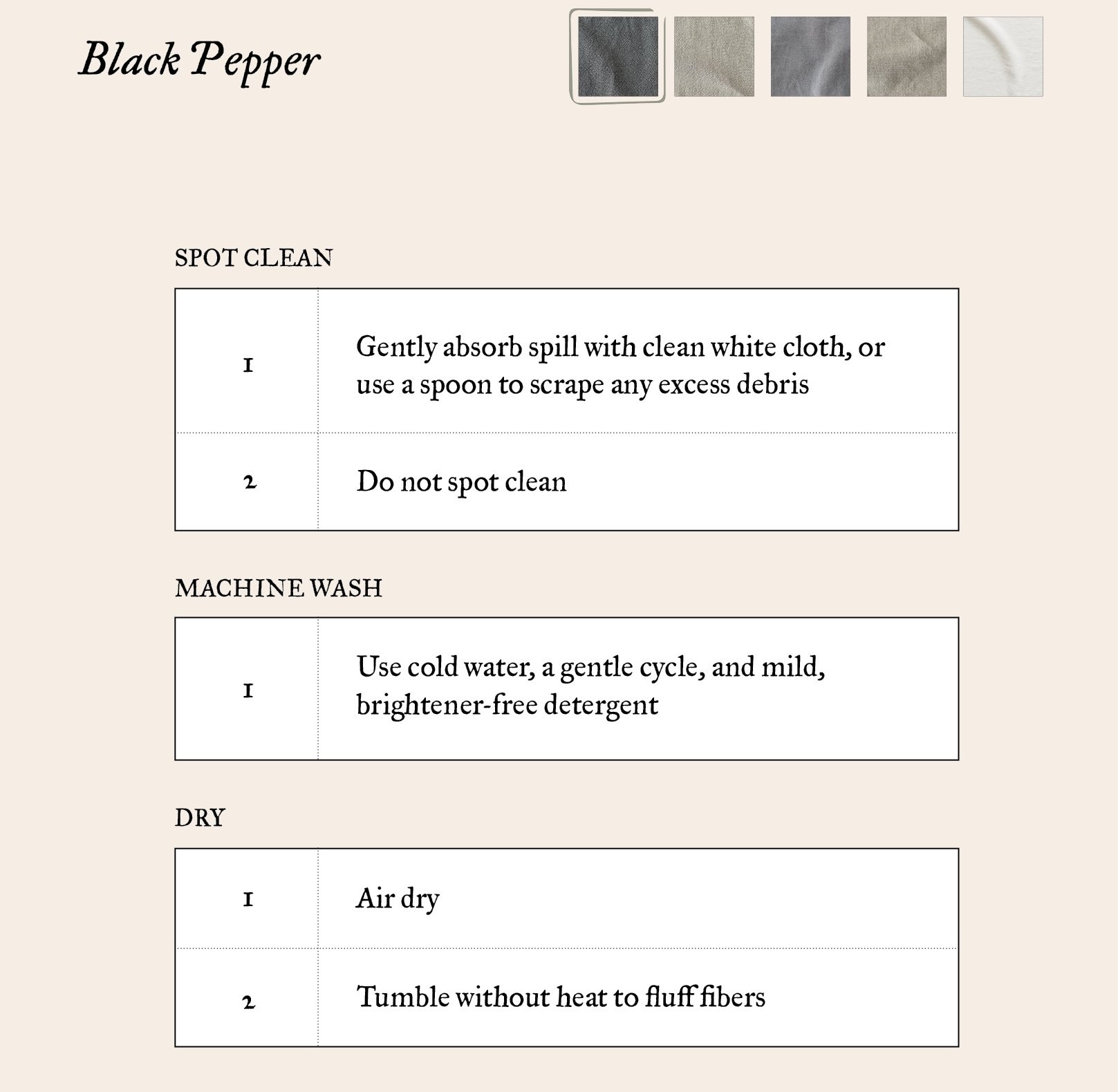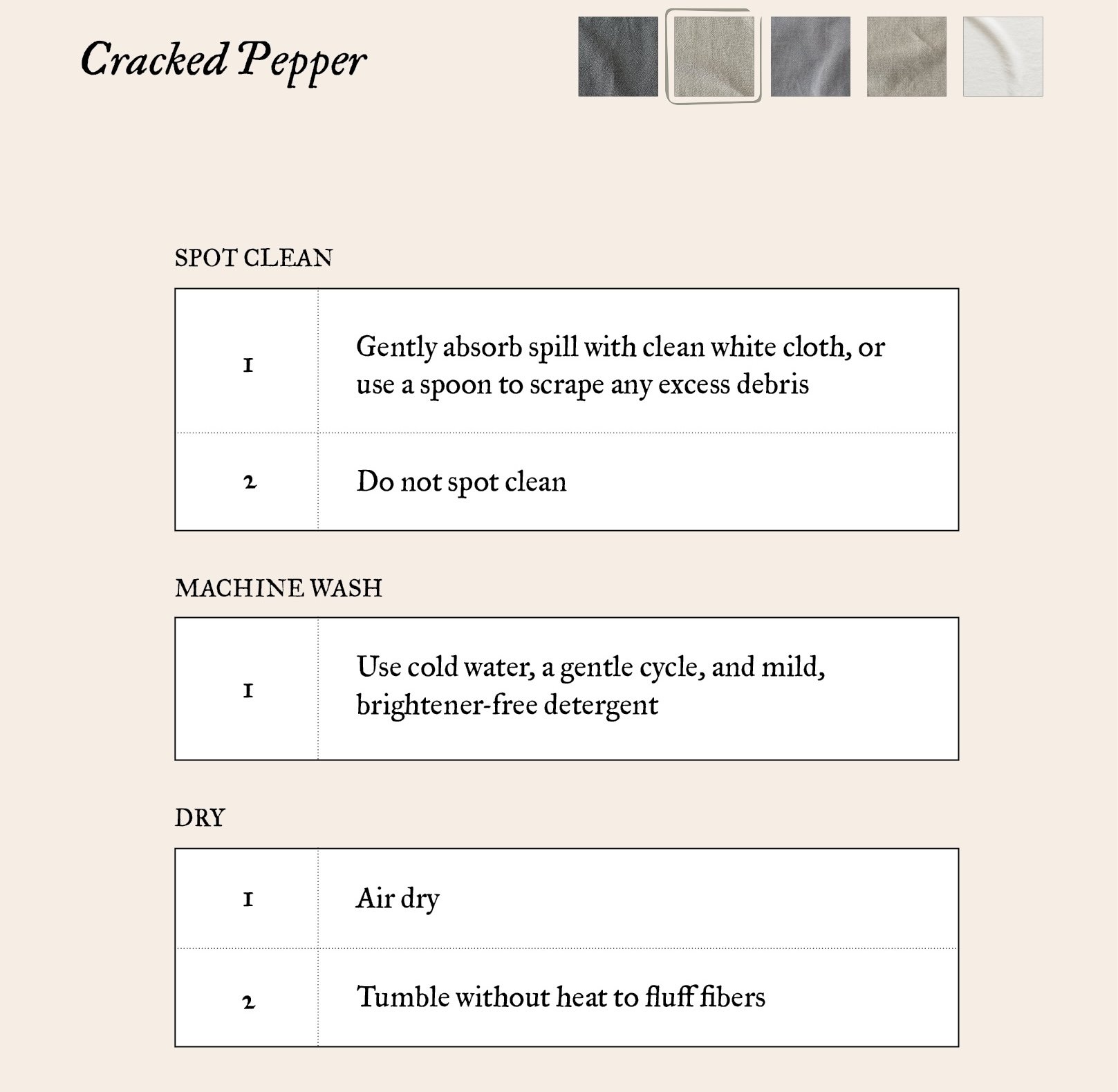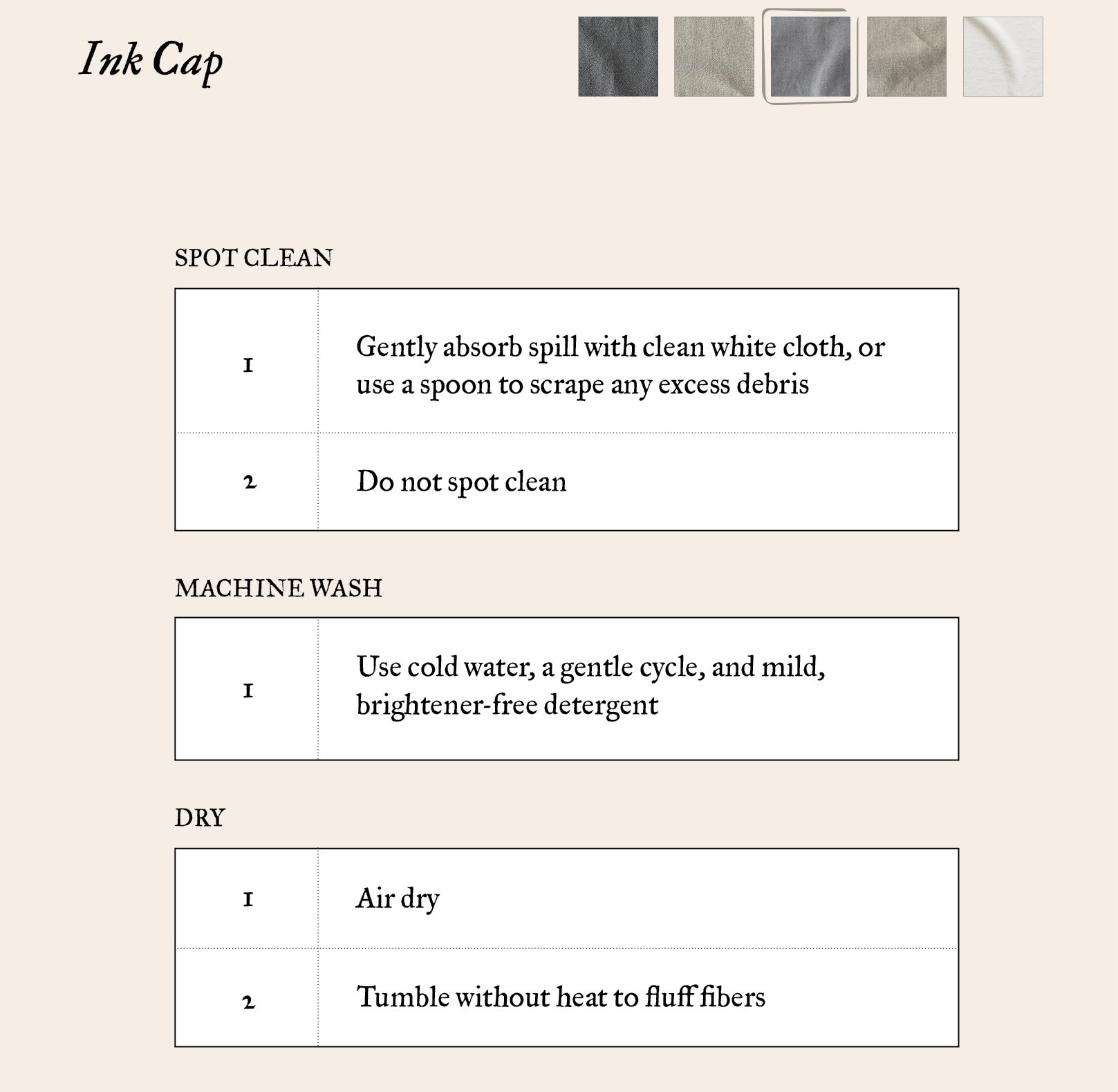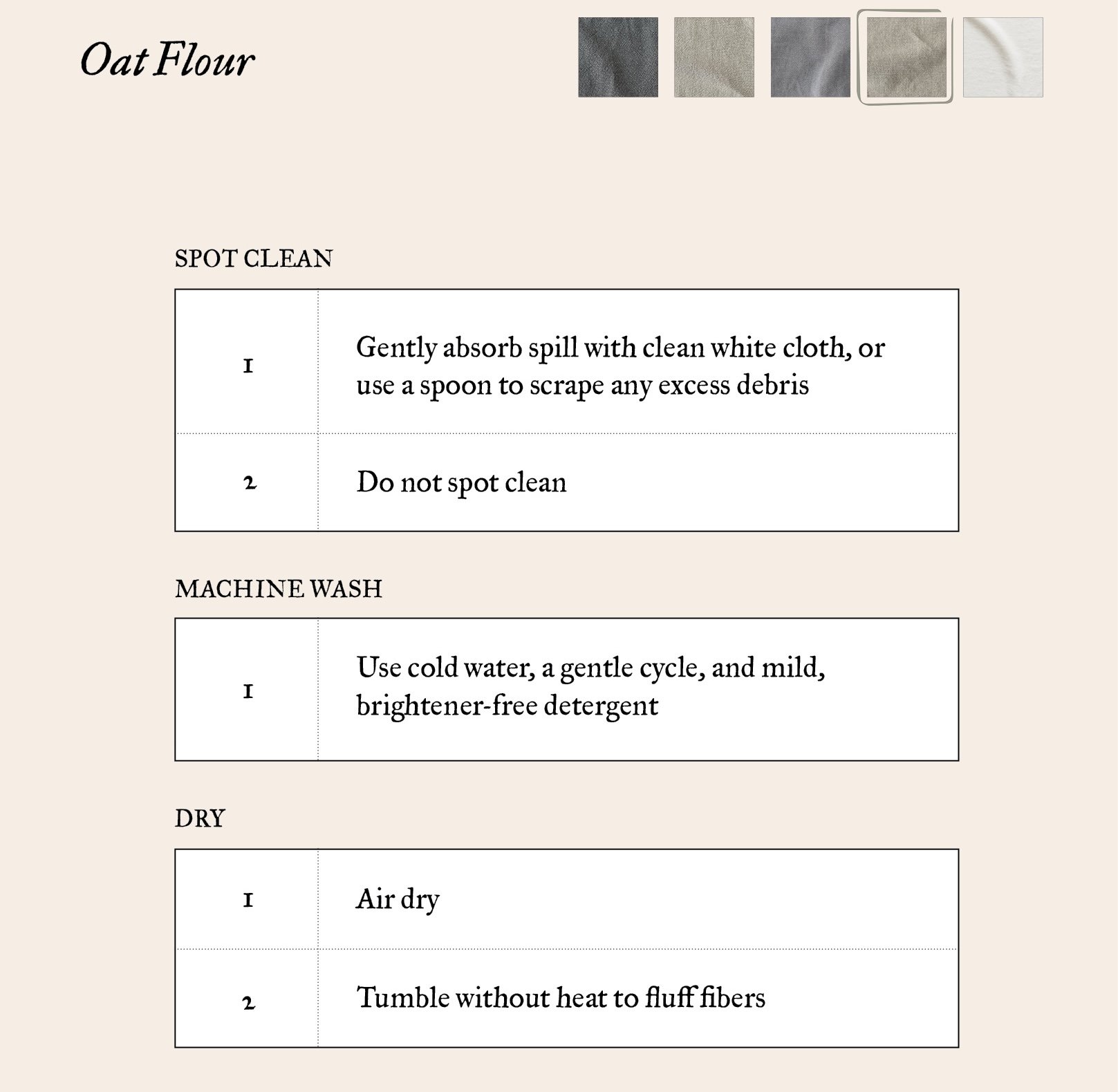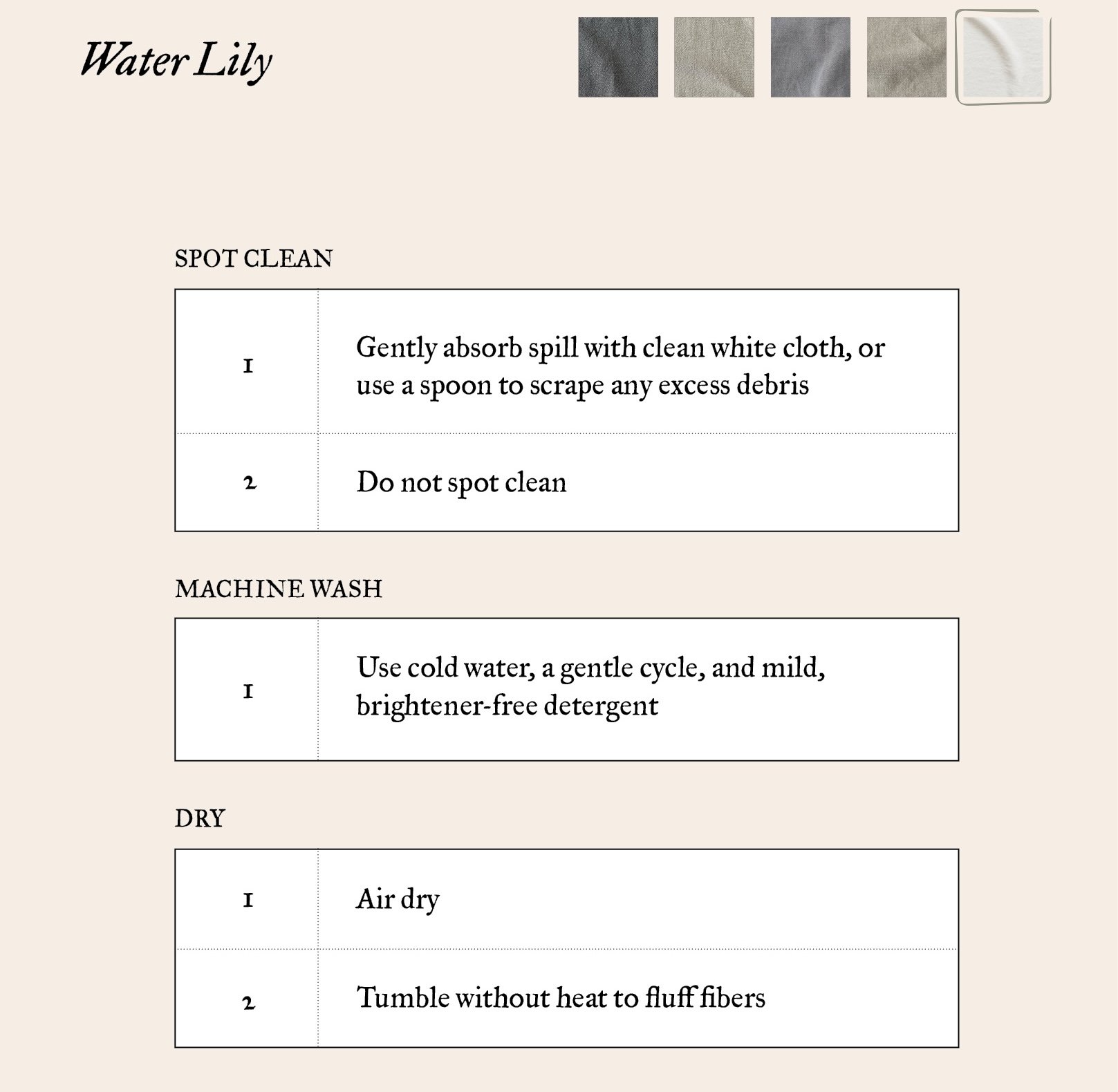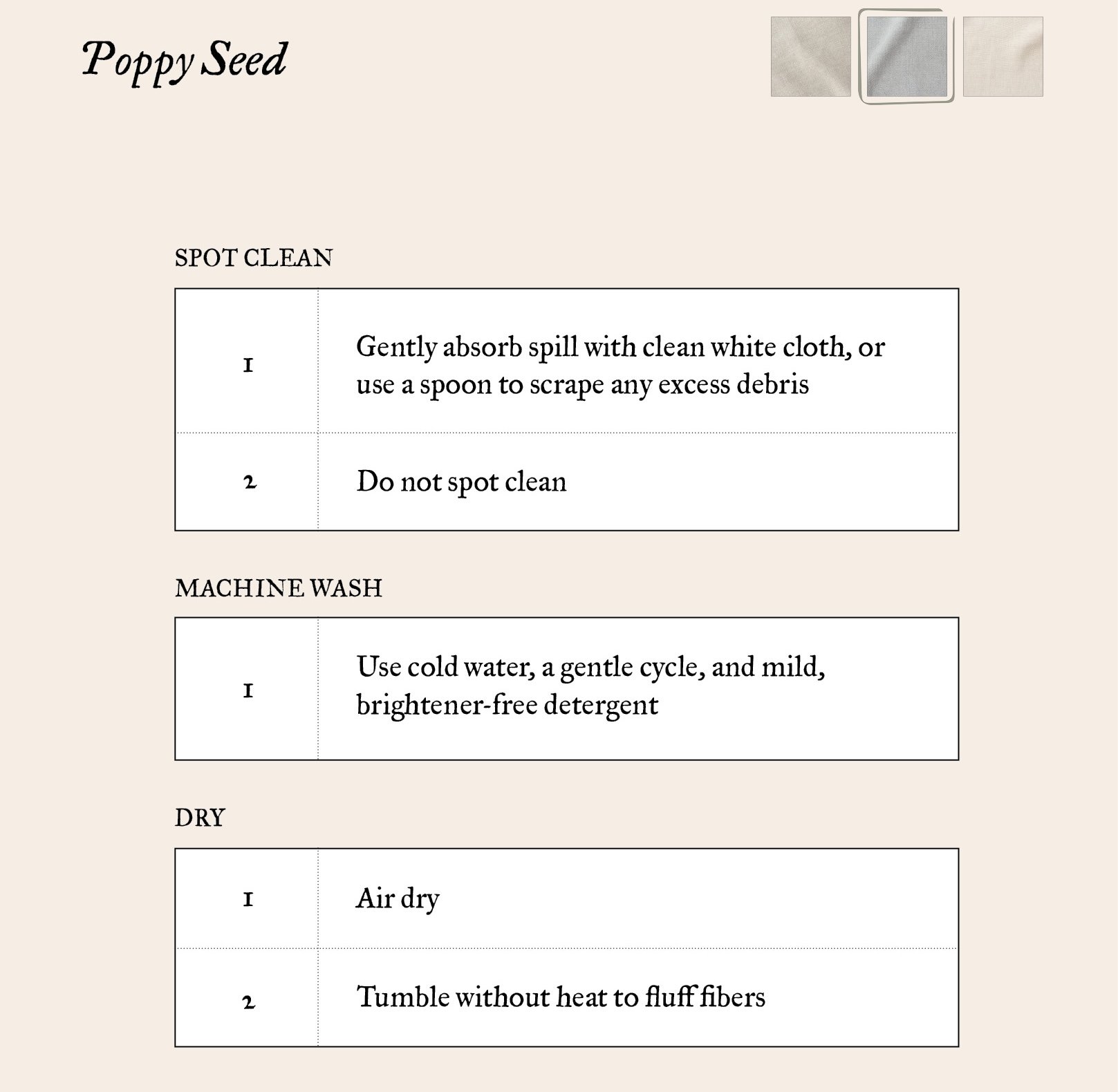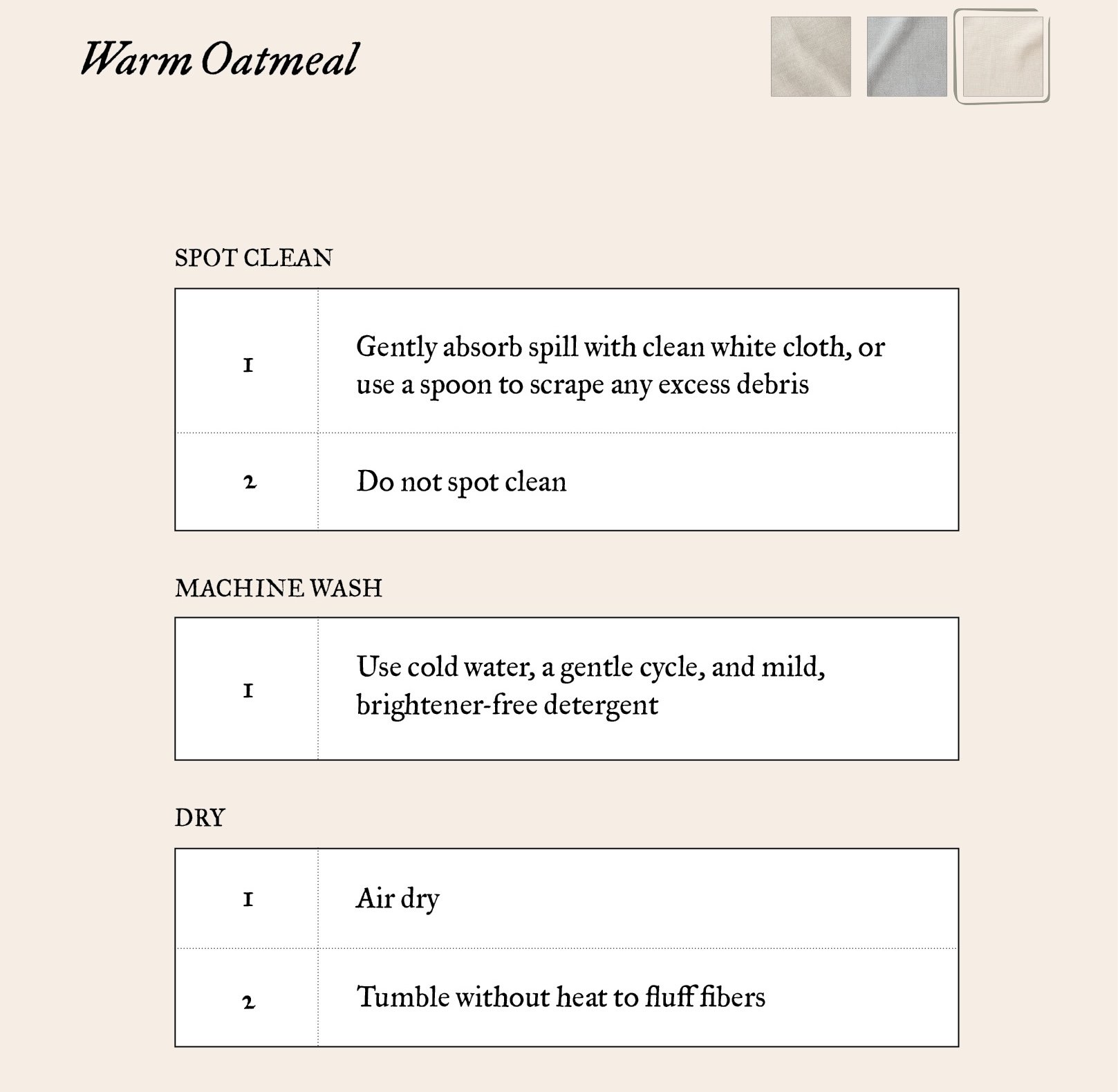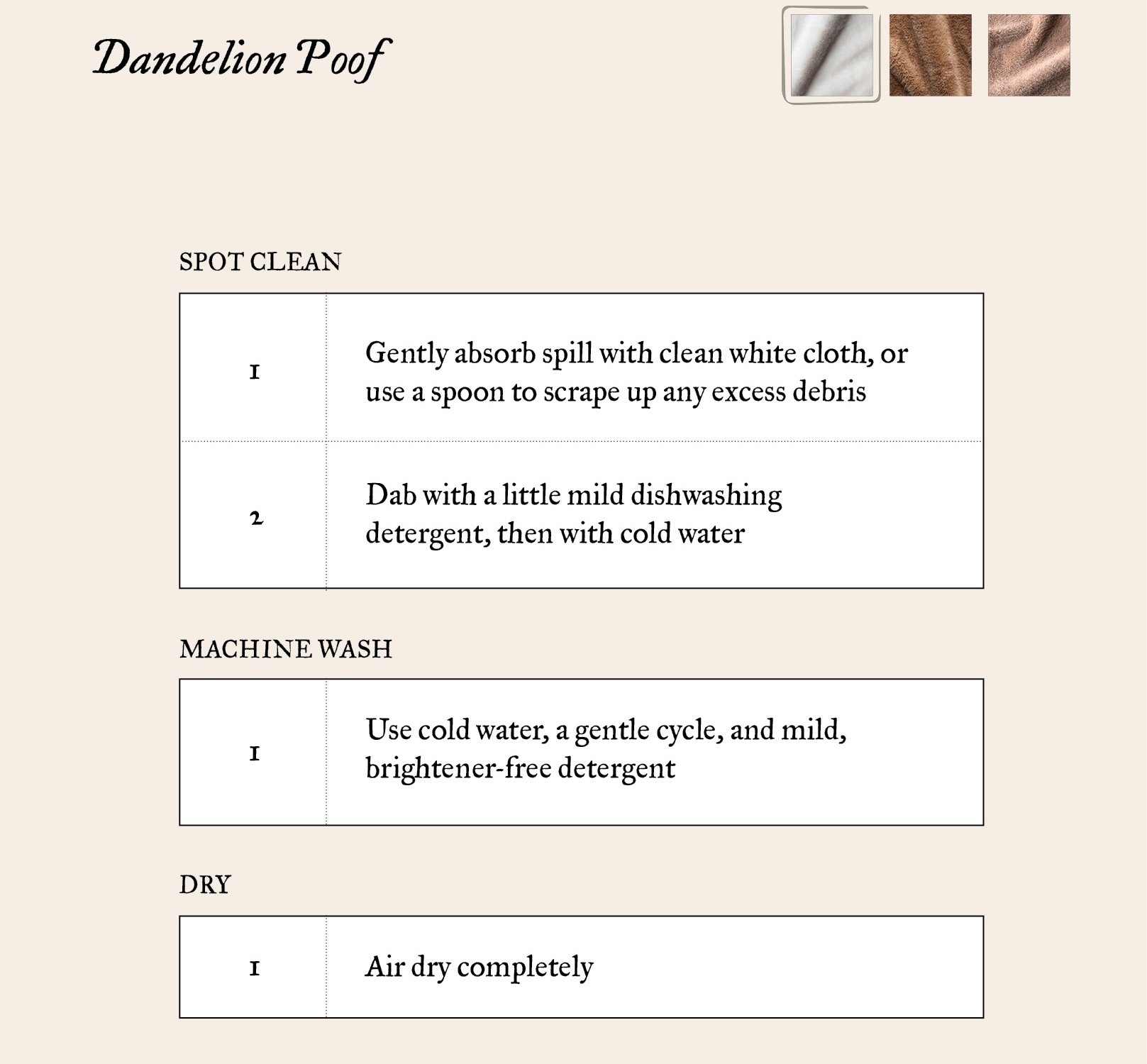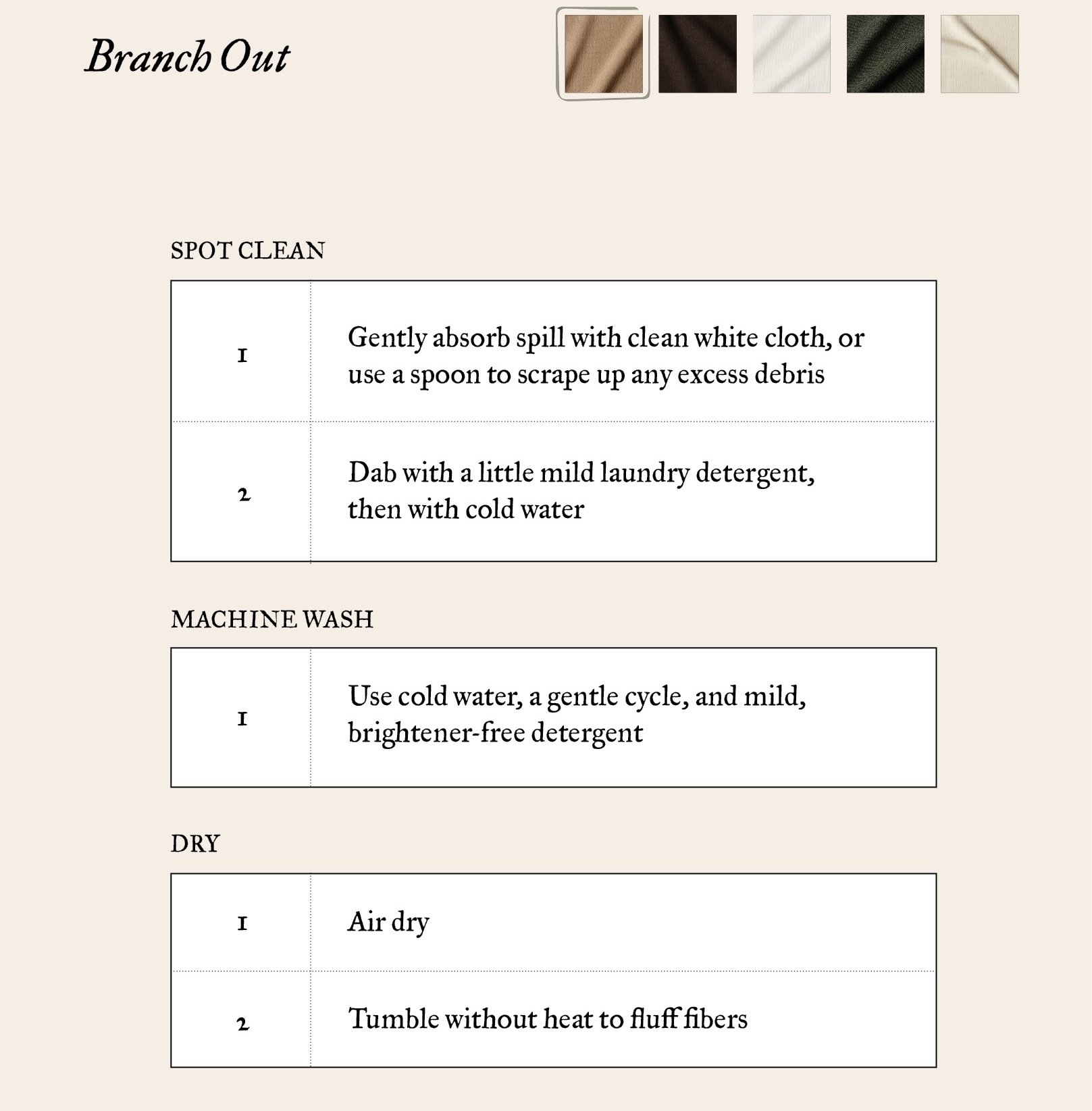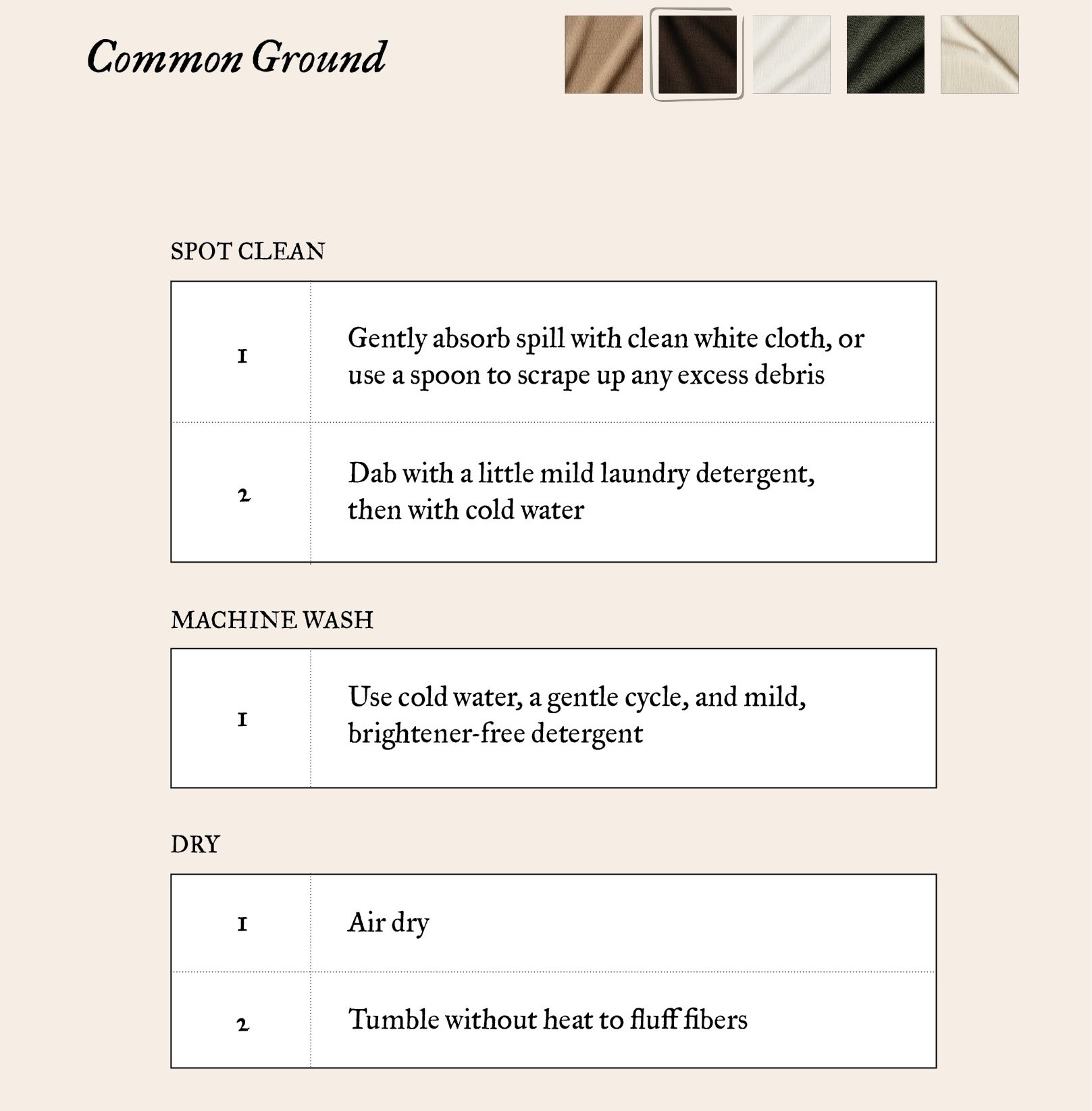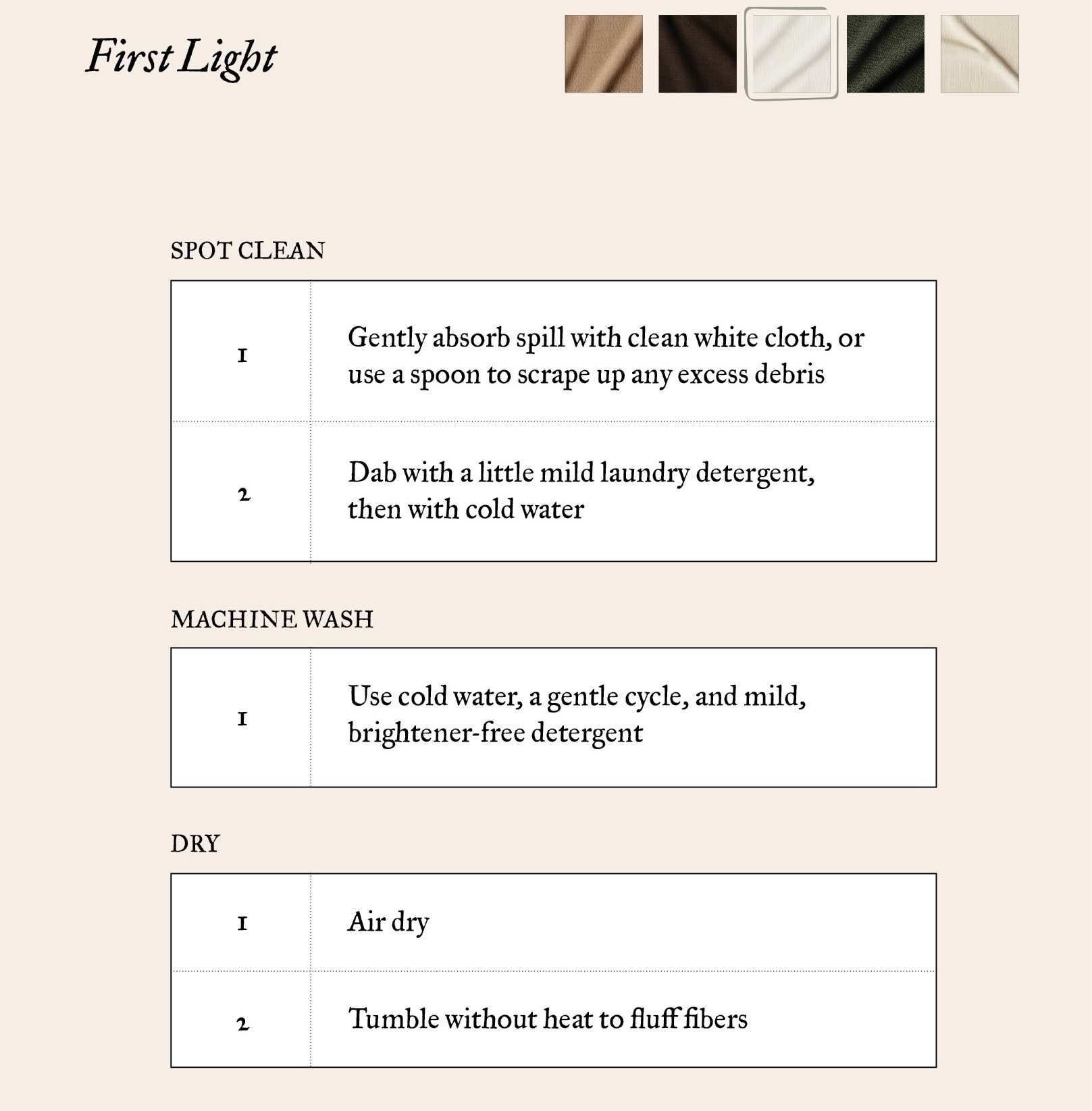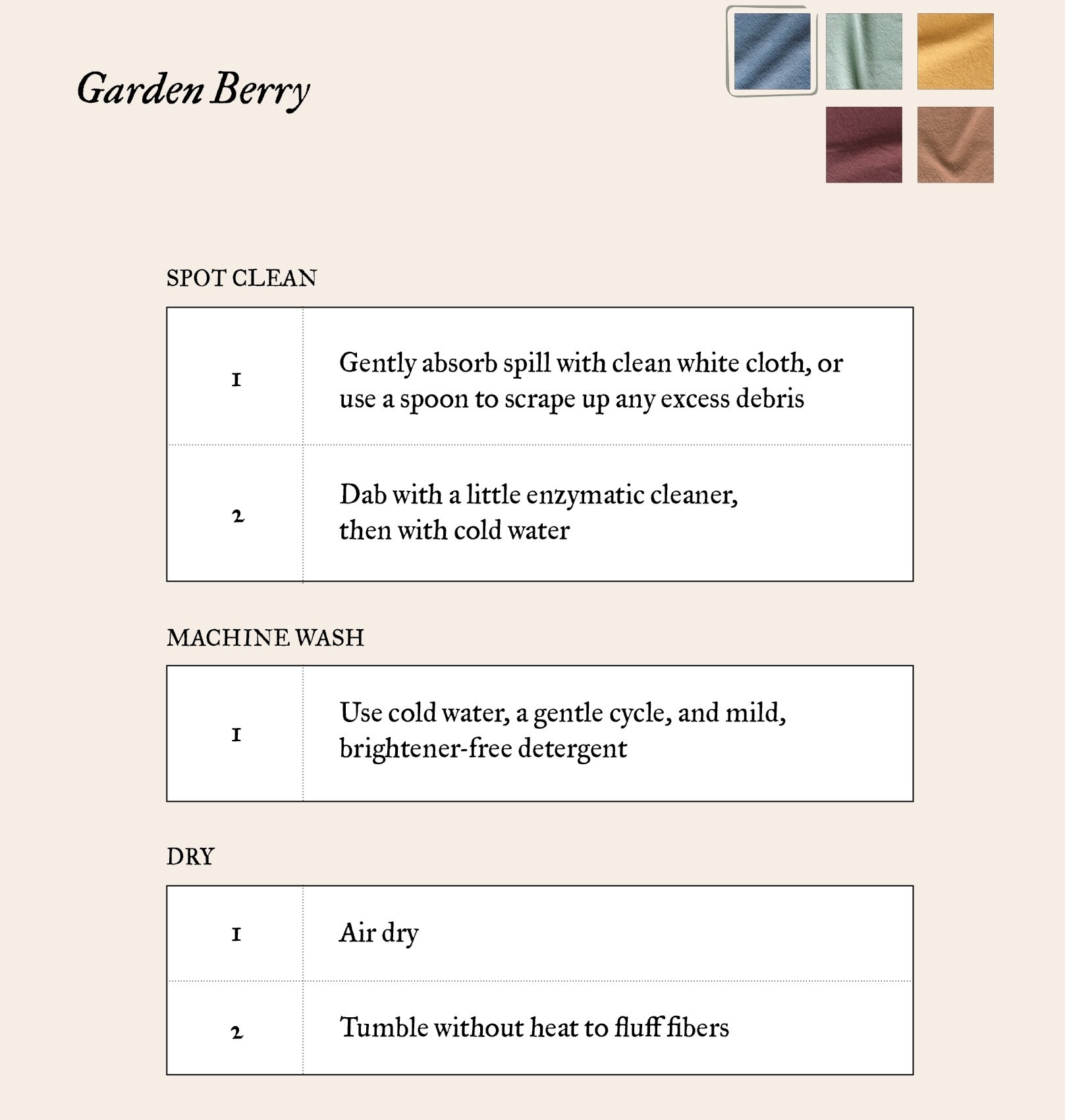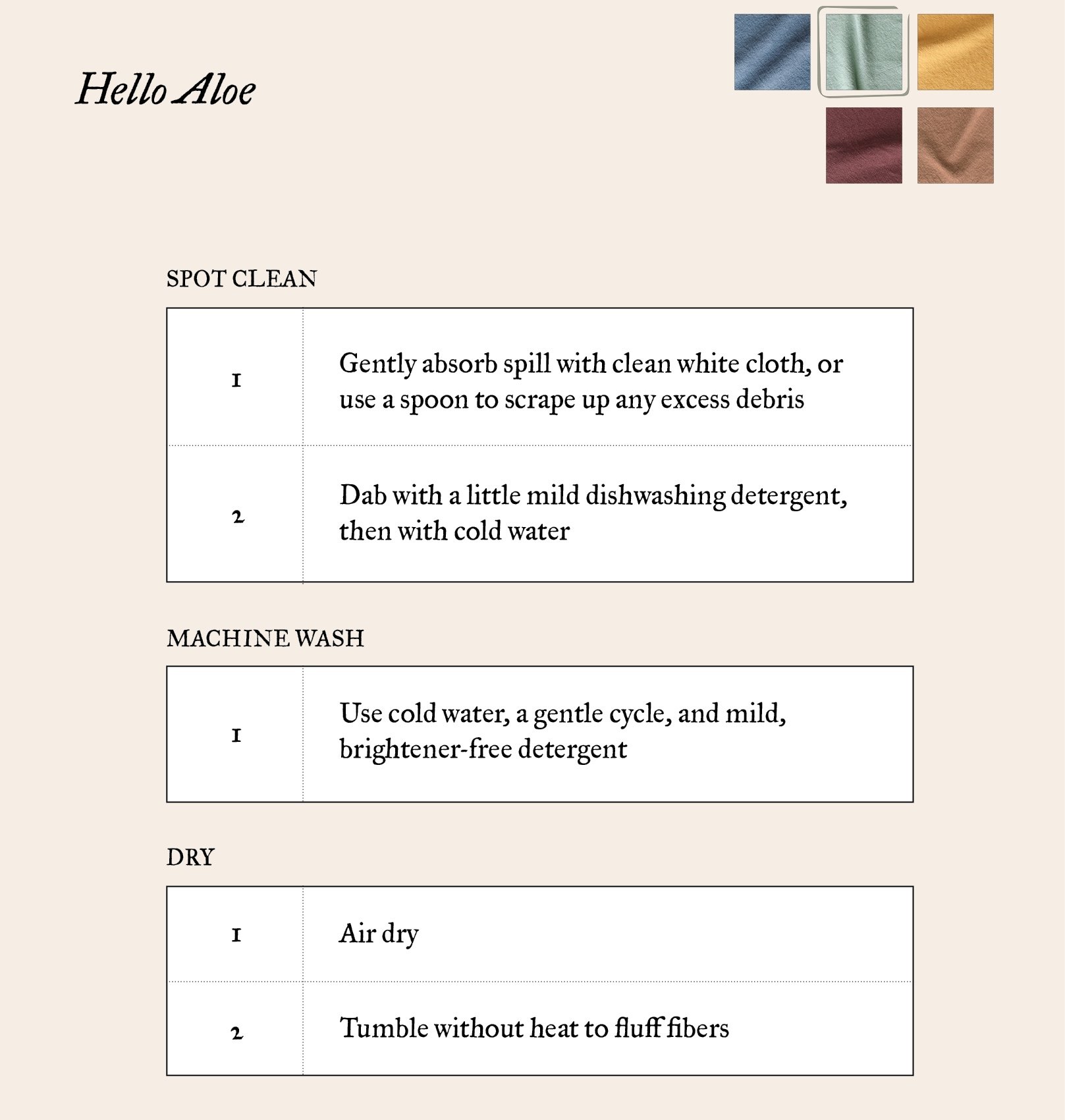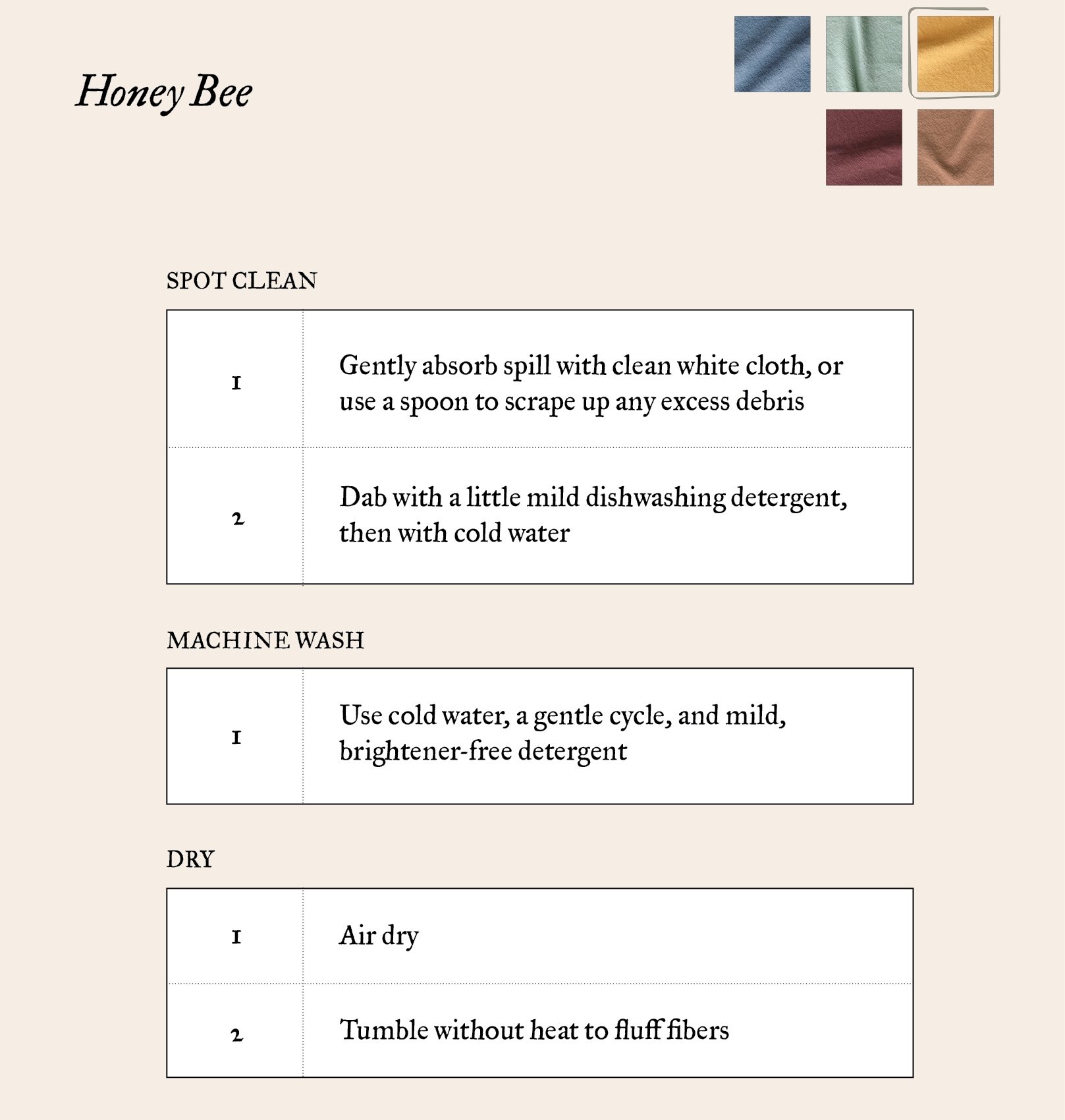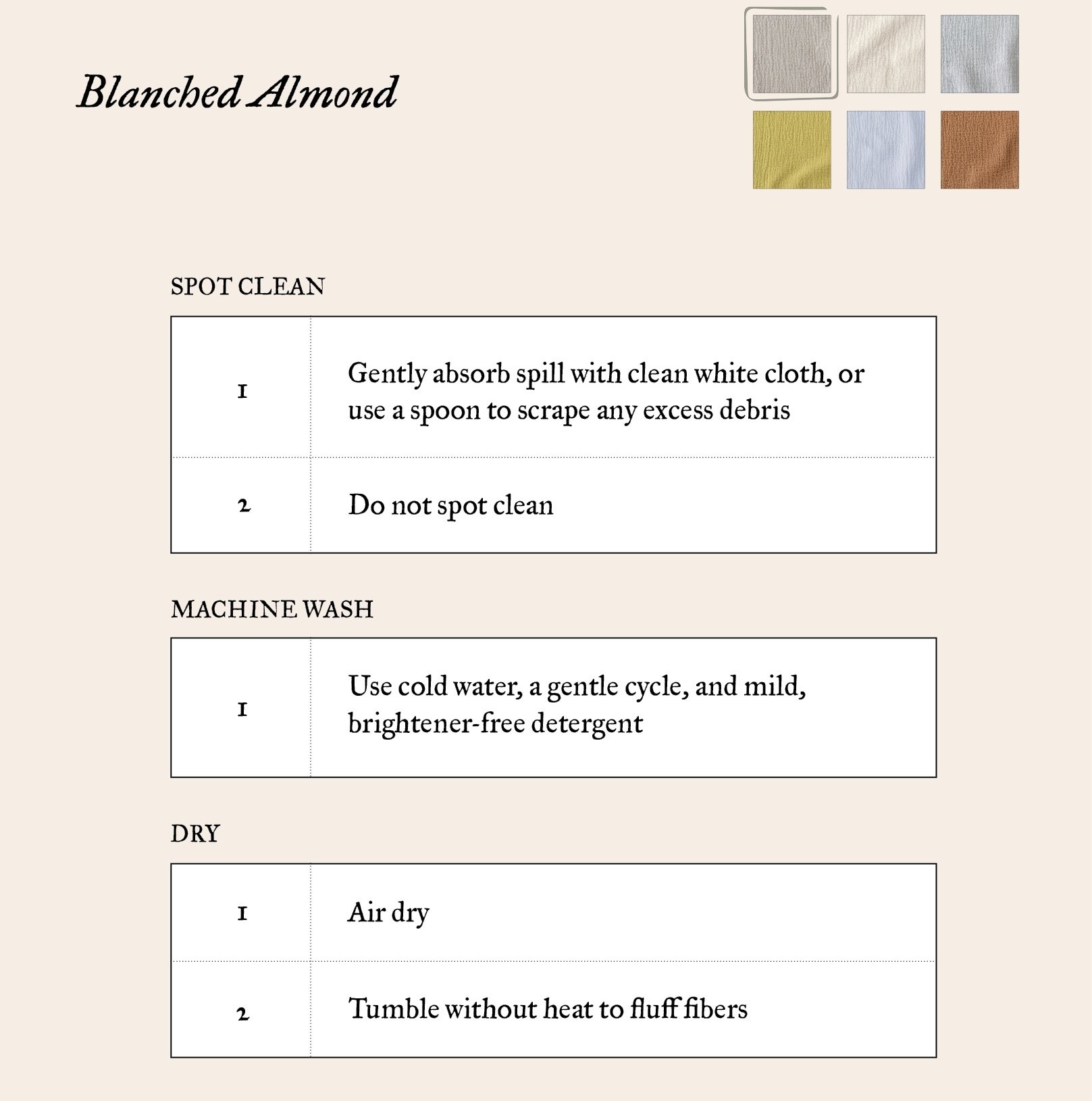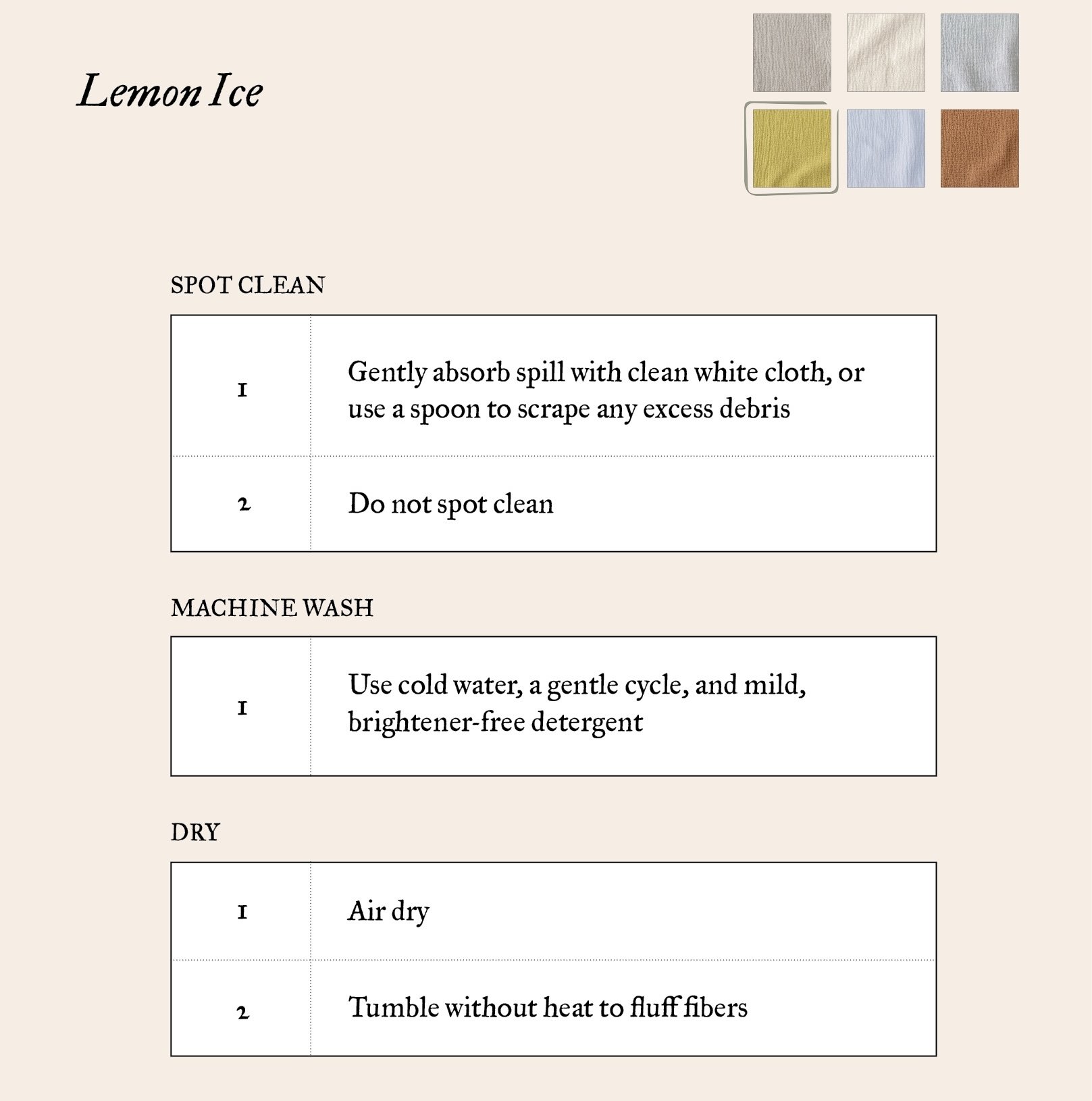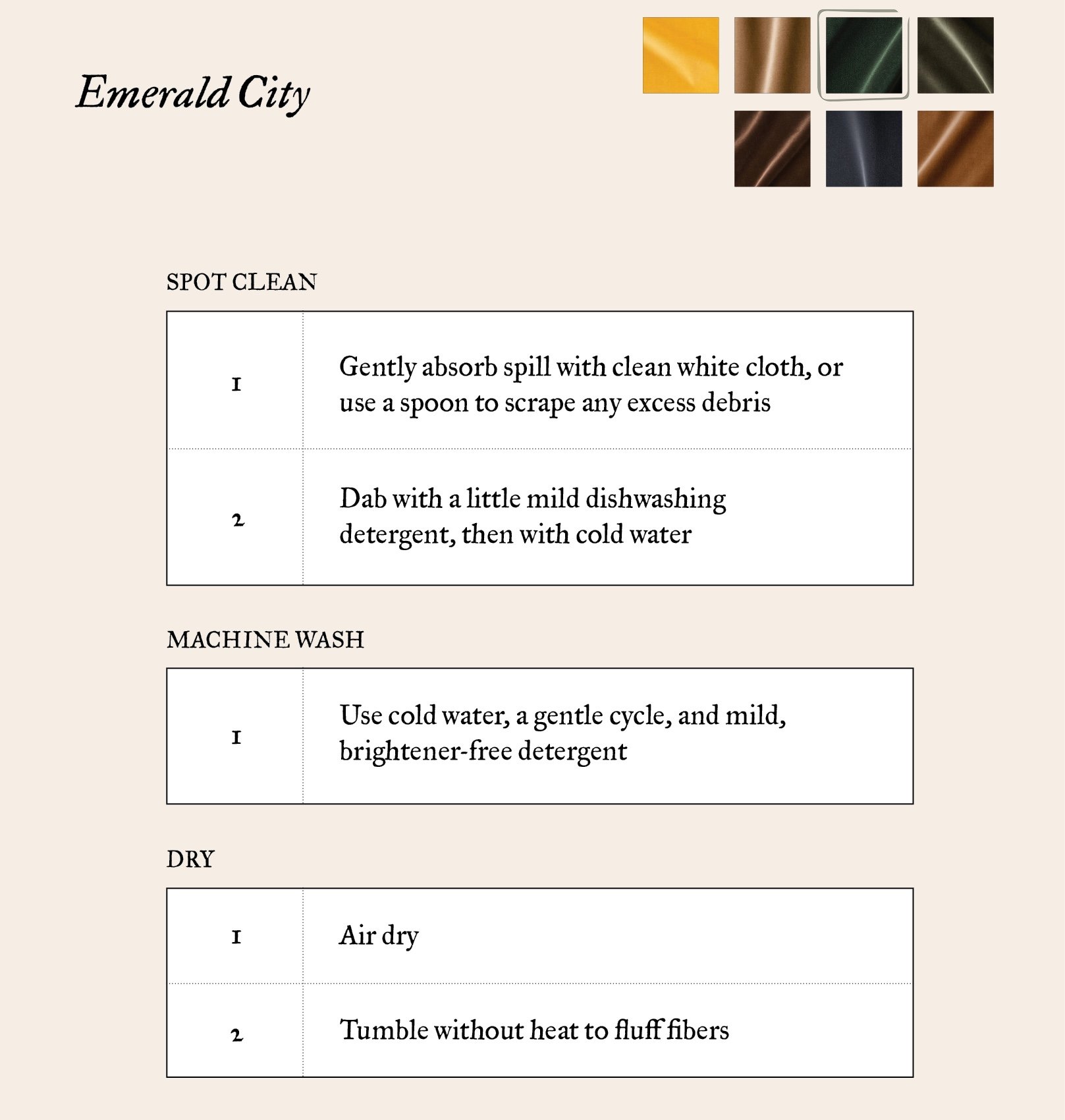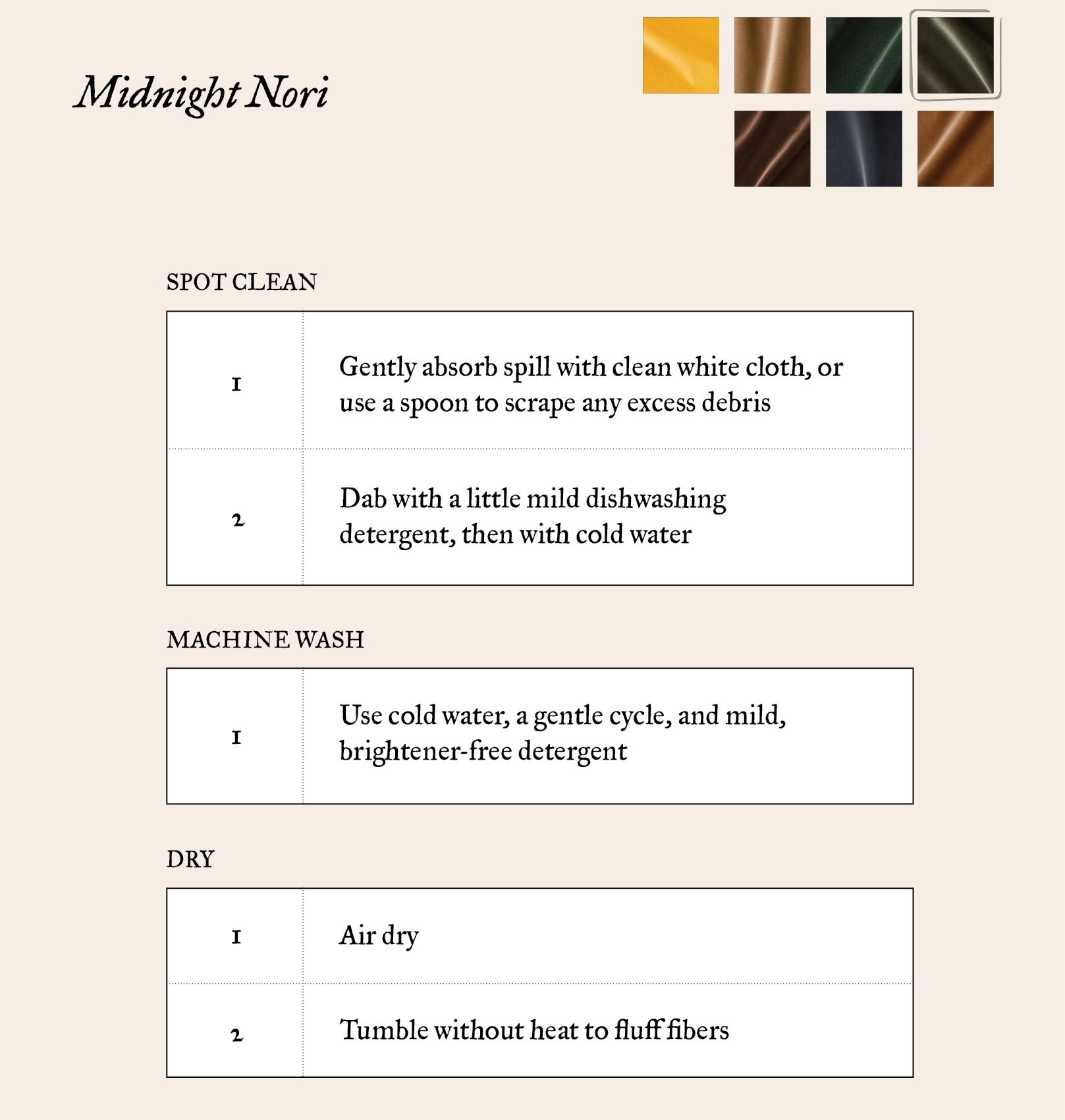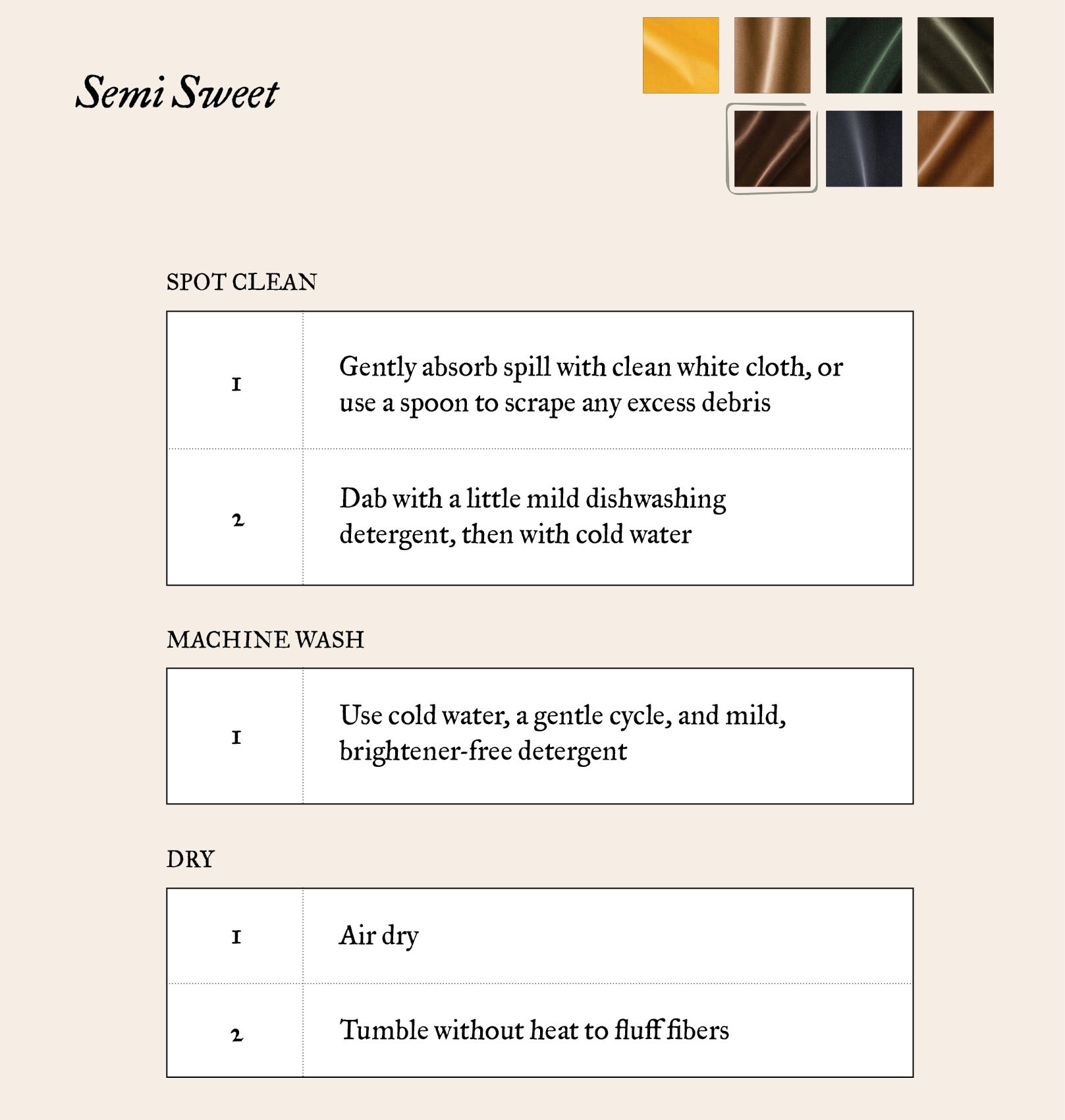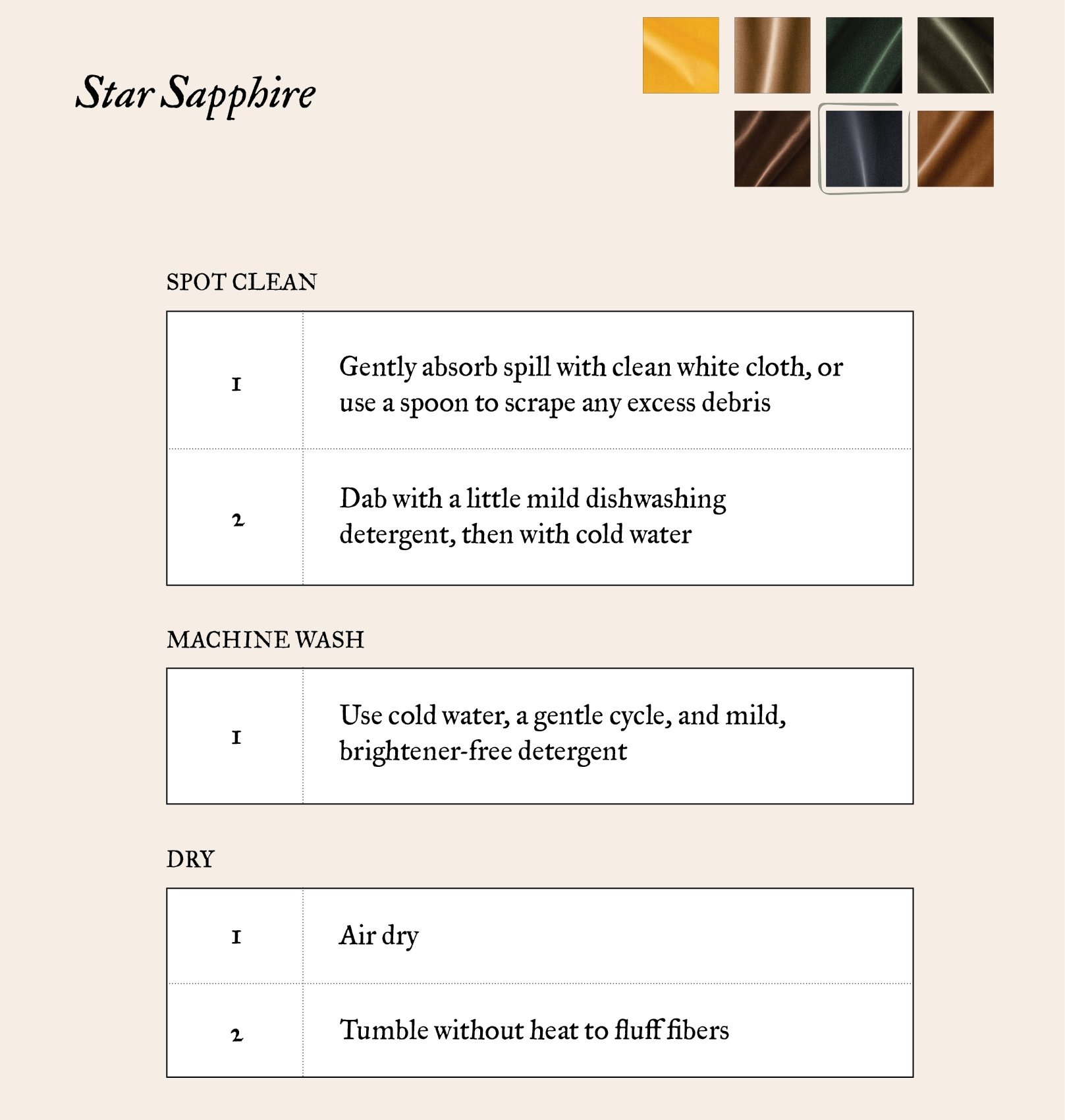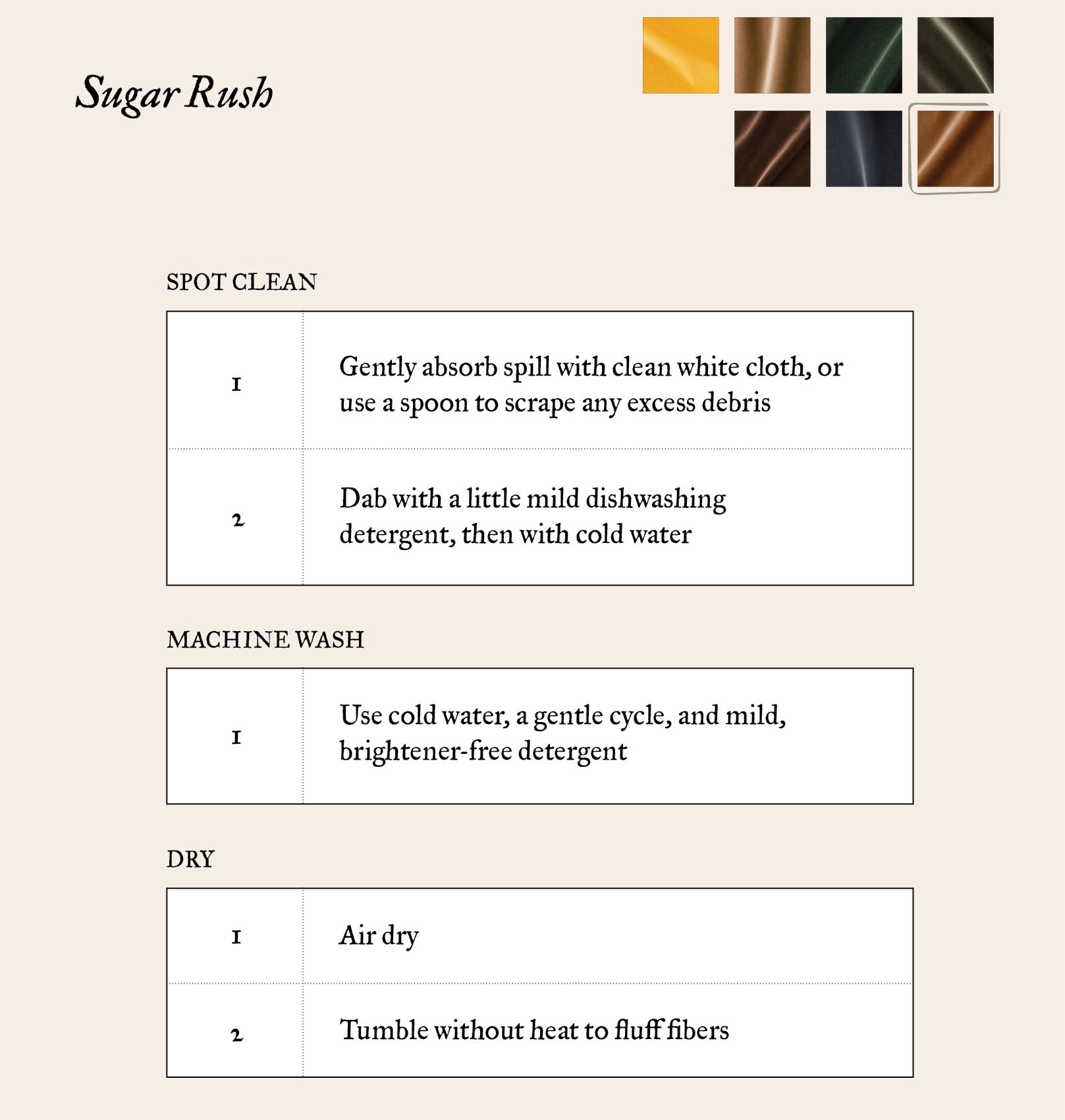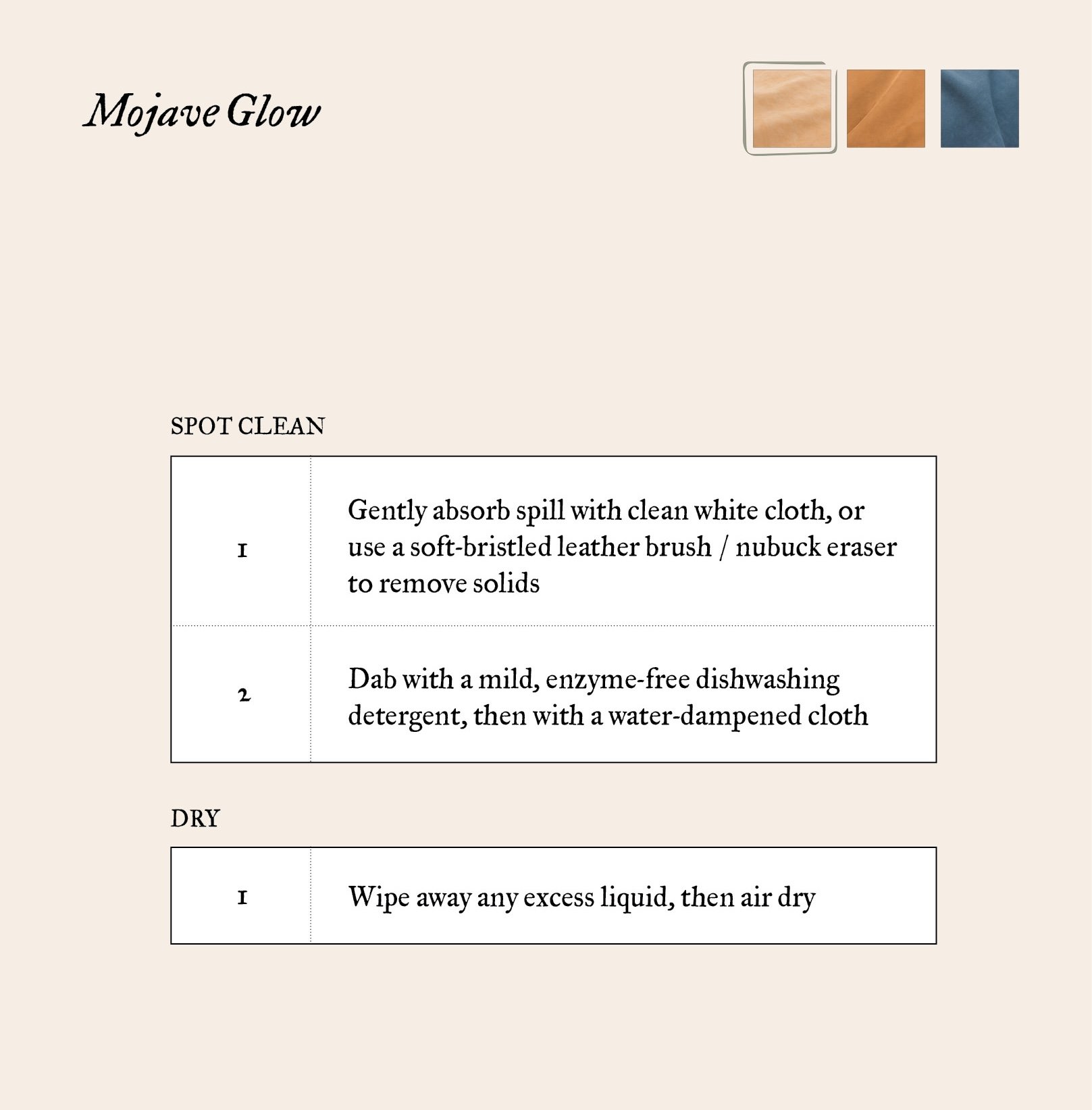

Spoiler alert: there's no foolproof approach to washing a slipcover. Natural fabrics are gorgeous to spend time with, but they are not invincible, and countless variables (i.e. type of stain, time of absorption, fabric color) make cleaning an imperfect science. This guide is simply a collection of tips and caveats we've learned during our comprehensive and continuous wash testing.
Explore by cleaning method or jump to a fabric:
Cotton Canvas • Cotton Linen • Light Weight Linen • Medium Weight Linen • Recycled Faux Fur • Recycled Poly Weave • Thread-Dyed Cotton Linen • Washed Cotton Linen • Washed Cotton Velvet • Meridian Leather
Spot cleaning
Since some of our fabrics are dyed by hand, not all are spot-cleanable. Check the care instructions for your fabric on the care cards below.
• Rubbing makes things worse. Always dab gently.
• Absorb liquid spills quickly and gently using a clean white cloth.
• Scrape thicker spills with a spoon to prevent absorption.
• Do not spot-clean Light Weight Linen, Medium Weight Linen, and Washed Cotton Linen.
Cleaning method
Dry cleaning
As with any luxury material, laundering is usually best left to professionals. Dry cleaning is our recommended method of care, since it delivers the most consistent results.
• Not all dry cleaners are created equal, so give yours a Google and ask questions.
• Mention that heat can cause the fabrics to shrink.
• Dry clean all slipcover components together when possible so components wear evenly.
Machine washing
Washing your slipcover at home is often also possible, and many of our customers have had success doing so.
• Don’t machine wash if your machine has an agitator–they can prematurely break down fabrics.
• Use cold water, a gentle cycle, and mild detergent without brighteners.
• Close all zippers.
• Wash all slipcover components when possible so the set wears evenly.
• Don't crowd your washing machine. Wash the slipcovers by themselves in several small loads.
Drying
Machine drying natural fibers will cause the fabric to shrink. Air-drying is a must.
• Hang dry until just barely damp.
• Briefly tumble dry using very low heat or no heat at all to fluff the fibers back up.
• Cotton Canvas slipcovers should be vigorously shaken out and air dried fully.
Cotton Canvas
This structured pure cotton comes in an assortment of rich hues and can be susceptible to fading in the sun or wash. It’s normal for high-pigment colors to release a little excess dye during the first wash. Cotton Canvas is also prone to seizing up when soaked. If you choose machine wash, vigorously shake out the slipcover before air drying, then put the components back on the cushions and frame while still slightly damp. This allows the material to stretch back into shape as it dries the rest of the way. Consider flipping and rotating the cushions until they’re dry on all sides.
Cotton Linen
Like its thread-dyed counterpart, Cotton Linen can be spot-cleaned with a judicious dab of mild dishwashing detergent. If your slipcover is white Pacific Pearl—or if you’re negotiating an oil-based stain—you can even use a small amount of enzymatic cleaner.
Light Weight Linen
These breezy, all-natural linen fabrics are meticulously pigment-dyed by hand. This dyeing method produces exquisite color variation but makes spot-cleaning a no-no—especially since we don’t coat our slipcovers in any protective chemicals (water, dirt, or oil repellent) that might affect the look or texture.
Medium Weight Linen
A sturdier, more robust all-natural linen with a loose weave. As with the other pure linen, spot-cleaning is not recommended. And note that pet claws may be prone to cause snags and pulls here. Very subtle shrinking after laundering is normal. The fabric will break in and stretch out over the course of a few days.
Recycled Faux Fur
With Recycled Faux Fur, you can skip the dry cleaner altogether—machine-washing your slipcover at home will get you professional-grade results. This fabric also handles spot-cleaning well, so there's often no need to throw it in the wash after treating a stain. Just remember, Recycled Faux Fur should never go in the dryer—allow your slip to air-dry completely. To even out the nap, use a hairdryer to gently blow dry the fabric while lightly brushing the fibers with a soft-bristle brush (or your hand) in the direction of the fur.
Recycled Poly Weave
Recycled Poly Weave has it all––a texture so linen-like you’d be shocked to learn it’s made entirely of recycled polyester; a heavy weight, durable composition that helps it stand up to daily life; a no-fuss set of care instructions that make it our best performing fabric for spills, stains, and easy cleaning. Read more in our library post.
Thread-Dyed Cotton Linen
Every fiber of this stunning cotton-linen blend is saturated with dye at the yarn level (before weaving) for vibrant, nuanced color. It’s colorfast and can be spot cleaned for the most part. Just make sure to double-check the care card for your fabric color—spot-cleaning methods vary slightly by hue and type of stain.
Washed Cotton Linen
This gauze-y cotton and linen blend is our lightest weight fabric and should be handled with extra care. It is pigment dyed by hand, and should not be spot cleaned, since this can pull dye from the yarns, leading to discoloration.
Washed Cotton Velvet
You can wash these lavish, rich velvets in your home machine, and they can be spot-cleaned—as long as you keep to the care instructions for your fabric color and type of stain. Smooth out the nap or brush away stubborn dust or crumbs with a soft-bristled brush.
Meridian Leather
To keep your Meridian Leather looking its best, every so often, give it a quick brush in both directions with a soft-bristled brush. For dirt that's a bit more caked in, use a brush with coarser bristles (that's still designed with fine leather in mind). Try to avoid moisture as much as possible around leather, but when spills happen, follow our care instructions to avoid stains. Be aware that exposure to direct sunlight will cause natural fading over time.
